world view of American Society and Politics
What People Around the World Like – and Dislike – About American Society and Politics
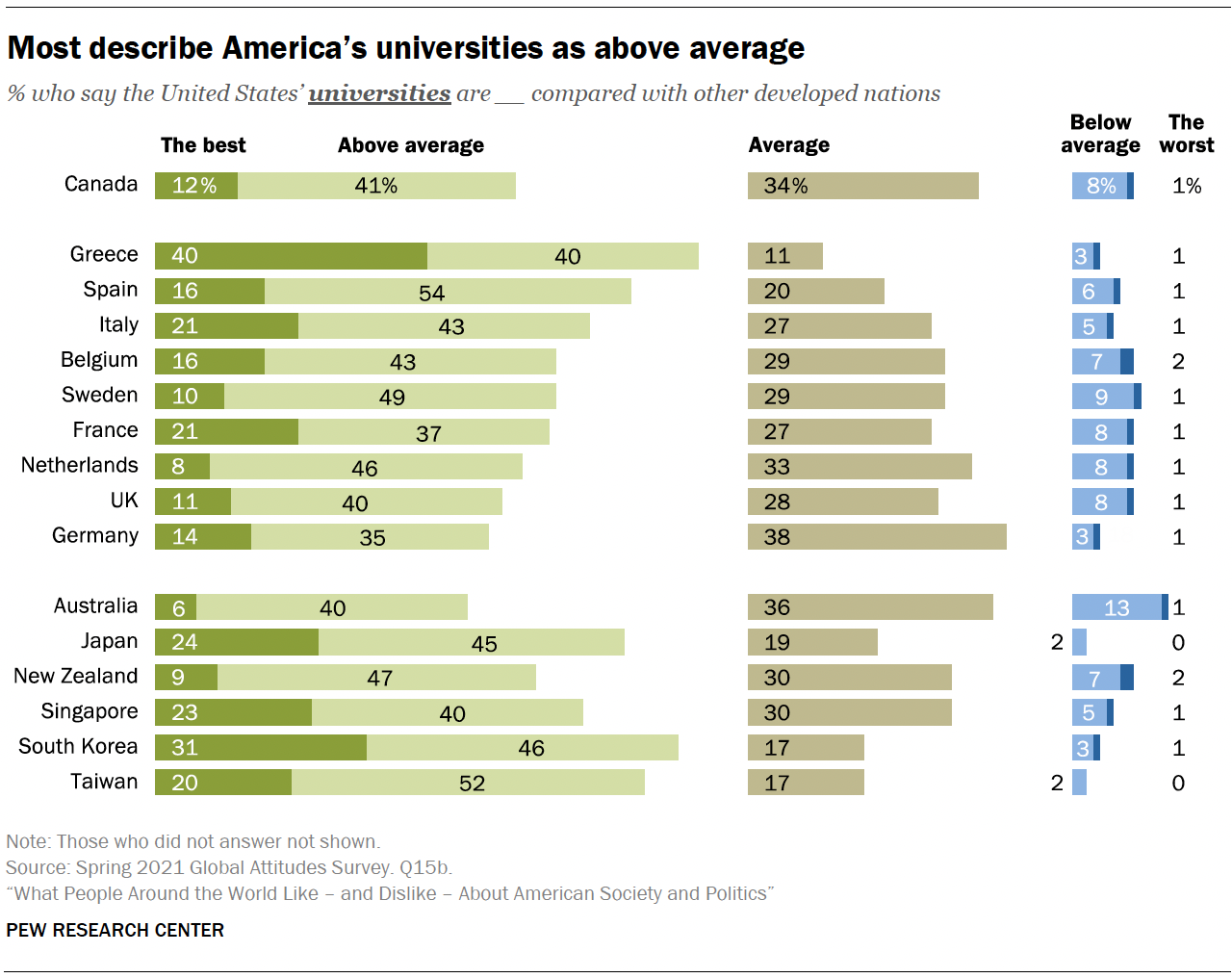
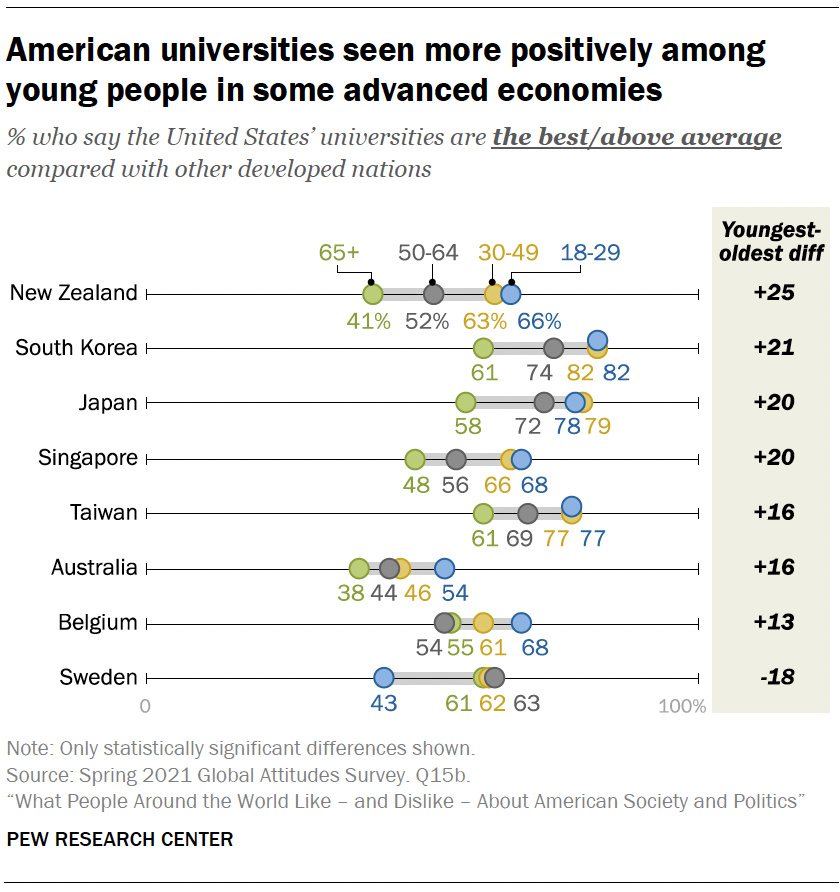
Digital Literacy for St. Cloud State University
What People Around the World Like – and Dislike – About American Society and Politics


Using social media for news: the latest Pew update.
Solid work by @asmitch :https://t.co/82uvEEZ1Iz pic.twitter.com/cZ4CHhMxQ0
— Bryan Alexander (@BryanAlexander) January 16, 2021
https://bryanalexander.org/digital-literacy/using-social-media-for-news-the-latest-pew-update/
++++++++++
more on SM News in this IMS blog
https://blog.stcloudstate.edu/ims?s=social+media+news
In 2021, we need to fix America’s internet: We pay twice as much as Europe for high speeds, assuming we can even get them from r/technology
We pay twice as much as Europe for high speeds, assuming we can even get them
https://www.theverge.com/22177154/us-internet-speed-maps-competition-availability-fcc
Across the country, the FCC and internet service providers are pretending there’s competition in an unimaginable number of places where it doesn’t actually exist.
As FCC Commissioner Jessica Rosenworcel wrote for The Verge last March, as many as one in three US households doesn’t have broadband internet access, currently defined as just 25Mbps down and 3Mbps up — which feels like the bare minimum for a remote learning family these days.
early 12 million children don’t have a broadband connection at home, the Senate Joint Economic Committee reported in 2017. And the “homework gap” hits harder if you’re poor, of course: only 56 percent of households with incomes under $30,000 had broadband as of last February, according to the Pew Research Center.
+++++++++++++
more on netneutrality in this IMS blog
https://blog.stcloudstate.edu/ims?s=netneutrality
“It’s no secret that students today face the ultimate paradox—the same tools they need to use to complete their work can also provide their biggest distractions from completing work.” How can we help them manage this struggle? https://t.co/xmaOzXpvfU
— PBS Teachers (@pbsteachers) November 13, 2019
According to the Pew Research Center, 72 percent of teenagers check their phones as soon as they get up (and so do 58 percent of their parents), and 45 percent of teenagers feel as though they are online on a nearly constant basis. Interestingly, and importantly, over half of U.S. teenagers feel as though they spend too much time on their cell phones.
Research on intrinsic motivation focuses on the importance of autonomy, competency and relatedness in classroom and school culture.
According to one Common Sense Media report, called Social Media, Social Life, 57 percent of students believe social media use often distracts them when they should be doing homework. In some ways, the first wave of digital citizenship education faltered by blocking distractions from school networks and telling students what to do, rather than effectively encouraging them to develop their own intrinsic motivation around making better choices online and in real life.
Research also suggests that setting high expectations and standards for students can act as a catalyst for improving student motivation, and that a sense of belonging and connectedness in school leads to improved academic self-efficacy and more positive learning experiences.
Educators and teachers who step back and come from a place of curiosity, compassion and empathy (rather than fear, anger and frustration) are better poised to deal with issues related to technology and wellness.
+++++++++
more on intrinsic motivation in this IMS blog
https://blog.stcloudstate.edu/ims?s=intrinsic
https://blog.stcloudstate.edu/ims/2017/04/03/use-of-laptops-in-the-classroom/
A majority of Americans use Facebook and YouTube, but young adults are especially heavy users of Snapchat and Instagram
http://www.pewinternet.org/2018/03/01/social-media-use-in-2018/
early 2018 is defined by a mix of long-standing trends and newly emerging narratives
Facebook and YouTube dominate this landscape, as notable majorities of U.S. adults use each of these sites. At the same time, younger Americans (especially those ages 18 to 24) stand out for embracing a variety of platforms and using them frequently. Some 78% of 18- to 24-year-olds use Snapchat, and a sizeable majority of these users (71%) visit the platform multiple times per day. Similarly, 71% of Americans in this age group now use Instagram and close to half (45%) are Twitter users
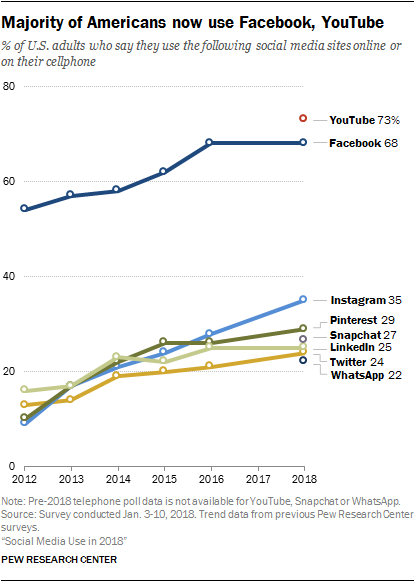
The video-sharing site YouTube – which contains many social elements, even if it is not a traditional social media platform – is now used by nearly three-quarters of U.S. adults and 94% of 18- to 24-year-olds.
a majority of users (59%) say it would not be hard to stop using these sites, including 29% who say it would not be hard at all to give up social media.
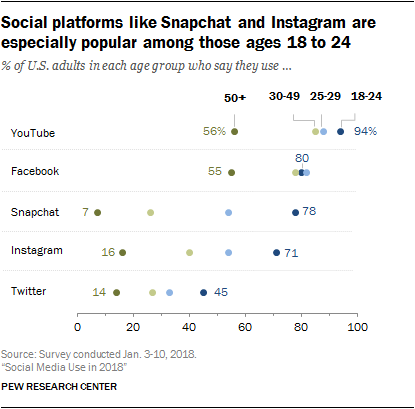
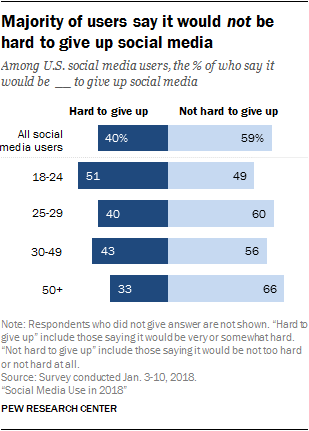
+++++++++++++++++++
more on social media use in this IMS blog
https://blog.stcloudstate.edu/ims?s=social+media+use
Shalina Chatlani Jan. 21, 2018
a Pew Research Center survey:
a 2017 survey of 11,500 girls across 12 European countries commissioned by Microsoft found 60% of respondents said they would feel more confident pursuing a STEM career if they thought men and women were being treated equally in those fields.
To increase access to the field and broaden the pipeline, institutions can ratchet up their STEM game by teaming up with K-12 and industry partners,
From 1991 to 2010, the middle class expands in France, the Netherlands and the United Kingdom, but, as in the United States, shrinks in Germany, Italy and Spain
http://www.pewglobal.org/2017/04/24/middle-class-fortunes-in-western-europe/
The size and the well-being of the middle class are intertwined with some of the key economic challenges facing the developed world this century – income inequality is rising in many countries, economic growth is anemic, and economic mobility is lesser than in the past.
A smaller middle class or a relatively less well-off middle class often reflects a more unequal income distribution. In turn, increases in income inequality present an adverse climate for economic growth. A relative decline in the incomes of lower- and middle-income families may create a drag on overall consumption in the economy, lead to excessive borrowing by these families, or provide disincentives to invest in education.
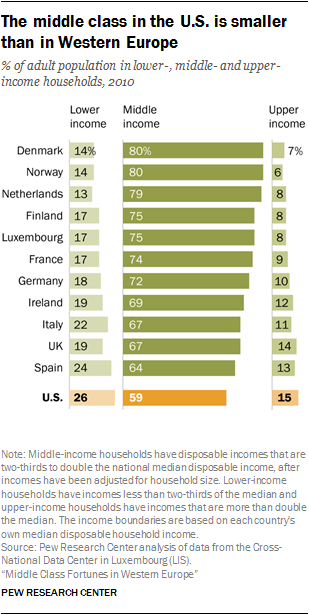
A more vibrant middle class may also improve the economic outlook for future generations. In the U.S., for example, communities with larger middle classes offer a greater likelihood that children will experience upward mobility relative to their parents’ status in the income distribution. A similar relationship has also been found to exist across countries, whereby intergenerational mobility is greater in countries with less income inequality.
Many countries in Western Europe have significantly larger middle classes than the U.S.
The U.S. has larger lower- and upper-income tiers than the selected countries from Western Europe
Income inequality is related to the size of the middle class in a country
My note: I wonder if/how this confidence correlates to the #FakeNews phenomenon
Published: Dec 9, 2016 9:00 a.m. ET ByCatey Hill Editor
Just 20% of Americans say they feel overloaded by information, compared with 27% who said they felt overloaded a decade ago, according to data released Wednesday by the Washington, D.C.-based Pew Research Center


+++++++++++++++++
more on information overload in this IMS blog: